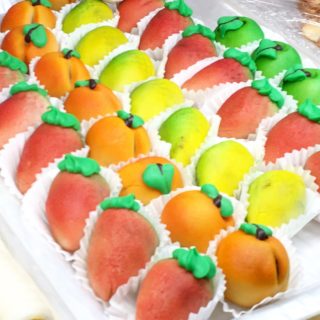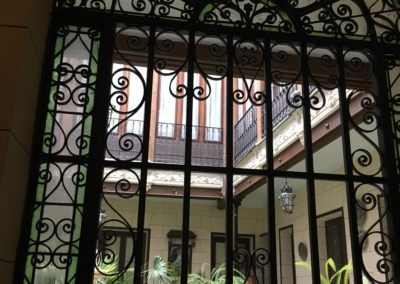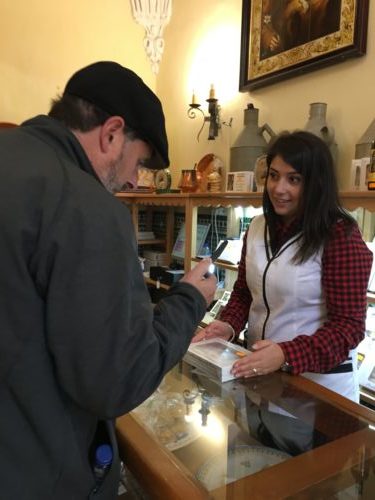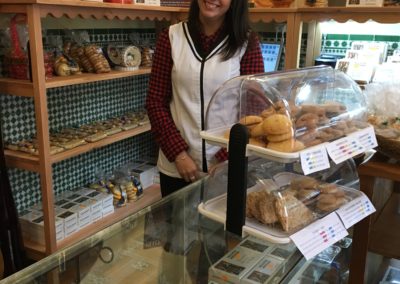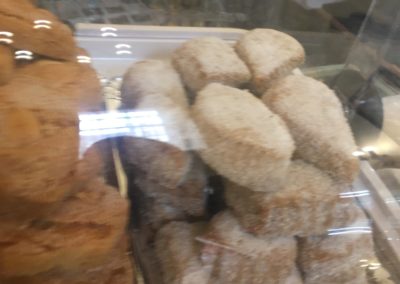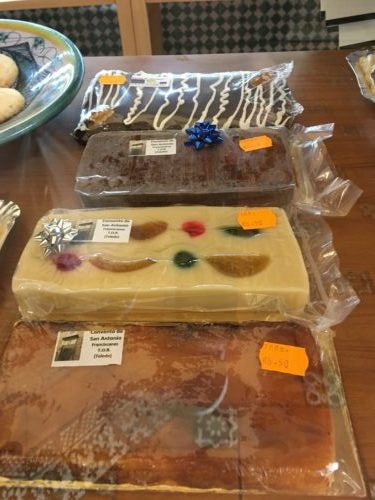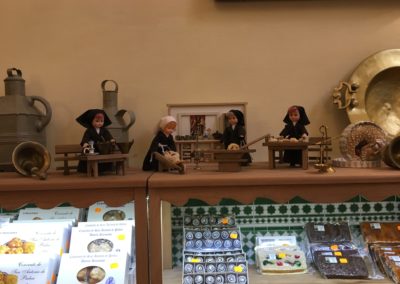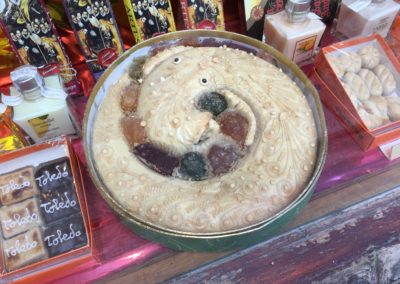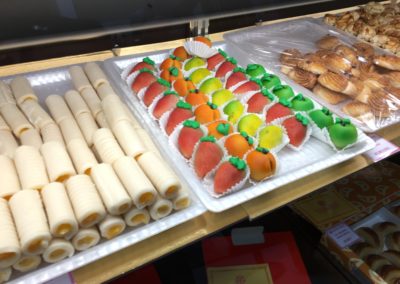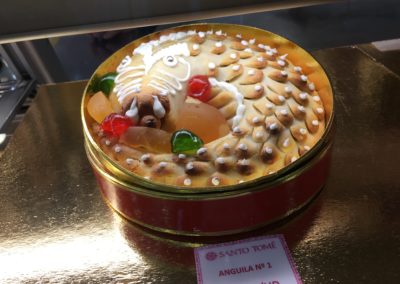LISTEN: Savory Road Radio Feature
Radio Copy: Marzipan is a delicious confection that is part of Christmas tradition all through Europe and Latin America. The rich almond paste is served many different ways, but most commonly in baked goods such as cookies. Most Americans have tasted marzipan when used as a filling for chocolates. On our recent visit to Toledo, Spain we found marzipan products served in a variety of ways and offered just about everywhere. I concluded the stuff was invented in Toledo –but was it?
The Spanish call it Marzipan (sans the R) and The European Union has recognized the name Marzipan de Toledo as a protected designation of origination – as they have Gorgonzola, Cognac, and Champaign. Does that mean Spain can claim it as theirs? Not necessarily – several countries take credit for the origination of marzipan including Italy, Greece, and Germany. Nobody knows exactly who first ground an almond with sugar. But I was pretty impressed when I heard Spain’s argument:
According to them, marzipan was invented by nuns of the Convent of San Clemente in Toledo following the Battle of Las Navas de Tolosa in 1212 which was an effort to take back territory occupied by the Moors. The resulting famine was devastating. Castile had limited foods and there was no wheat to make bread. Toledo happened to have an ample supply of sugar and almonds. The local nuns made a paste made with these two ingredients which held over the hunger pangs of the starving locals.
The tasty paste became a staple and now it’s one of Spain’s most popular foods. In most of the country, you can still buy marzipan cookies directly from nuns in monasteries, but be forewarned – you may confront a very unusual buying experience. In Barcelona and Madrid for example the sweets are made and sold by cloistered nuns that remain secluded from the public eye. This makes things a bit tricky as you never see the person selling you cookies. Revolving chambers incorporated into windows and doors are used. Thankfully in Toledo, we found cookie buying at one monastery much more consumer friendly…
At the Convent of San Antonio de Padua, non cloistered staff sell cookies face to face in a little shop. There, Ruth Moreno told us their cookies and candies are hand made by the nuns and sold to raise funds for the convent. We bought a sampler and found each one quite delicious. I felt sad knowing my chances were slim of finding something this good back home.
In Toledo, they love to shape Marzipan into little animals like pigs and bears. They also shape them into big animals including a larger-than-life statue of Don Quixote displayed at a local confection store. More practical uses include rolling it into thin sheets to glaze birthday, wedding, and Christmas cakes. In the UK you’ll find it used in fruitcakes. Traditional Swedish princess cake is typically covered with a layer of marzipan that has been tinted pale green and this spring you might find Marzipan in in king cake, which is eaten during Mardi Gras celebrations.
So, what’s happening closer to home?
The Indio International Tamale Festival heats up December 3rd and 4th with live music, a carnival, and wine and beer gardens. In Riverside, tour the Heritage House as they put on a 1890’s style Christmas celebration with baked goods, mulled cider, crafts, and more – that’s Sunday December 11th. On Wednesday December 14th Temecula holds the 7th annual Holiday Taste of Old Town. Buying a 25 dollar ticket from their web site gets you treats from participating restaurants, wineries, and merchants.

